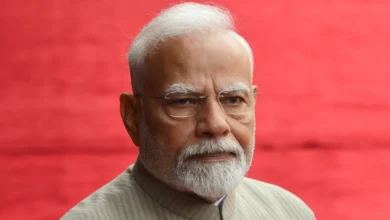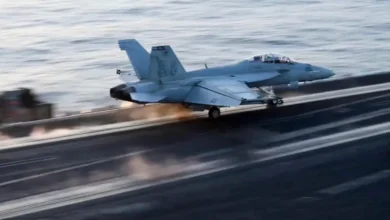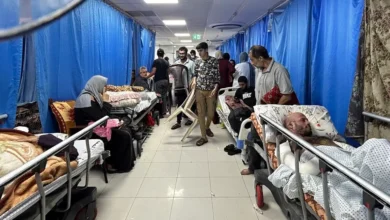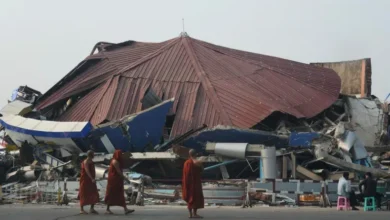For Ukraine’s defence industry goals against Russia, the sky’s the limit
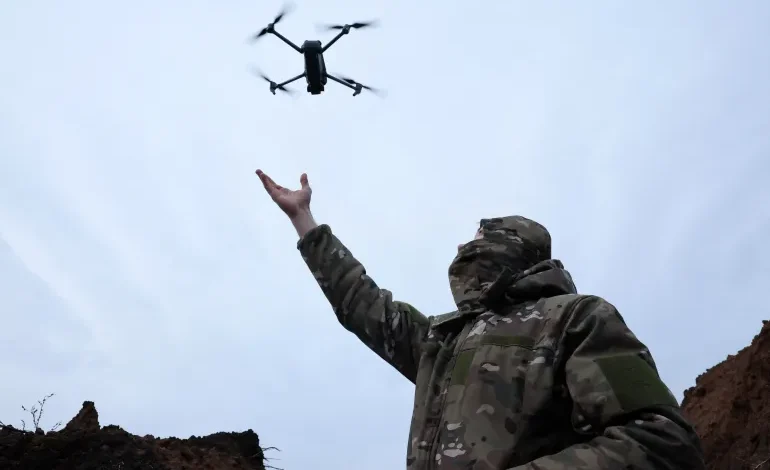
As Ukraine approaches the second anniversary of Russia’s full-scale invasion, it plans to produce more if its own ammunition and key weapons systems.
The goal of greater self-sufficiency comes as Ukraine’s Western allies meet increasing political resistance to military aid and Russia ramps up weapons production.
Last month, Ukraine’s prime minister, Denys Shmyhal, said the country plans to increase its domestic weapons production sixfold this year.
Ukraine’s defence industry has already begun to expand. Strategic industries minister Oleksandr Kamyshin said Ukraine last year doubled its ammunition production for NATO-calibre artillery systems.
President Volodymyr Zelenskyy said it had produced three times more equipment and weapons than in the first year of the war. That included armored vehicles and anti-tank missile systems.
But it’s in unmanned systems that Ukraine aims to be a global pioneer.
Almost 200 companies produced drones in Ukraine last year, up from seven in 2022, and their production increased 100-fold, said Shmyal.
That meant Ukraine was already producing 90 percent of the drones it uses, Zelenskyy said during a meeting with the joint chiefs this month.
The armed forces approved eight new models for procurement last month alone.
“Our task this year is not only to bolster our sky shield and Ukraine’s long-range capabilities to the fullest extent possible, but also to inflict maximum systemic losses on Russia,” Zelenskyy said.
As part of that goal, Ukraine plans to produce a million light drones and 11,000 medium- and long-range drones, the latter with a range of more than 1,000km (620 miles), said Kamyshin.
Ukraine had “established production” and a “financing plan” to achieve this, Rustem Umyerov, defence minister, told a meeting of the G7 representatives in Kyiv last December.
Days before he was dismissed, Valerii Zaluzhny, commander in chief, wrote that unmanned systems were “almost the only tool” to break the current stalemate, making up for Russia’s superiority in heavy equipment and personnel.
Experts tell Al Jazeera Ukraine’s ambitions are realistic.
“Kyiv certainly has the capacity to mass produce FPV [first person viewer] UAVs [unmanned aerial vehicles] given that many of these are based on commercial or hobbyist products,” Douglas Barrie, senior fellow for military aerospace at the International Institute for Strategic Studies (IISS), a think tank, told Al Jazeera.
“Manufacturing larger multi-role UAVs is more demanding, but again Kyiv has the ability to do this, if on a far smaller scale,” Barrie said.
“After the fall of the USSR, [Ukraine] was one of few countries that had a functioning aircraft engine industry,” Pieter Wezeman, senior researcher at the Stockholm International Peace Research Institute (SIPRI), told Al Jazeera.
“They can use that knowledge to rebuild a missile or a drone production capacity. It’s not coming from nowhere,” said Wezeman, whose research focuses on arms transfers and military production.
Early in the war, Ukraine repurposed commercially available FPV drones to drop grenades into the hatches of parked Russian tanks, instantly killing their crews. They offered an added propaganda bonus: drones could beam back video of the kills, allowing Ukraine to humiliate the Russian armed forces while boosting their own morale.
Ukraine believes building these drones more cheaply by itself would offer it more bang for the buck, cycle military expenditure back into its tax base and one day produce export revenue.
“Basically, they want to build a million flying munition pieces,” said Wezeman. “They will need some foreign components – a little chip, a camera like the one in a mobile phone… it’s not as extreme as it may sound.”
Oleksiy Danilov, who heads Ukraine’s National Defence and Security Council, recently claimed that Ukraine was already among the top three drone manufacturers in the world.
Russia’s plans to produce more than 32,000 drones each year by 2030 seem tame in comparison to Ukraine’s. Unable to match Ukraine’s production, Russia agreed to pay Iran $1.75bn for 6,000 Shahed drones, Ukrainian hackers recently revealed.
Soviet stuff and other Ukrainian mysteries
Suddenly last summer, Ukraine used a concert of unmanned systems to strike the occupied Crimean Peninsula with devastating effect.
On August 23, it destroyed a Russian S-400 anti-aircraft missile system 120km (74 miles) from the front line. On September 12, a combination of 10 drones and cruise missiles crippled a Russian submarine and a landing ship undergoing maintenance at the Sevastopol dry docks.
Two days later, surface drones struck two patrol ships and a missile corvette, while missiles destroyed a second S-400 battery in western Crimea’s Yevpatoria.
The reason for the escalation was Russia’s withdrawal from the Black Sea Grain Initiative, which allowed Ukraine to export agricultural goods. These are a lifeline for its economy and war effort, bringing it $23bn last year.
The most crippling strikes were yet to come.
On September 20, Ukraine destroyed half the Black Sea Fleet’s communications headquarters in Verkhnosadove northeast of the fleet base in Sevastopol, and two days later hit the fleet command headquarters in Sevastopol itself, claiming to have killed 34 officers, including fleet commander Admiral Viktor Sokolov.
Ukraine built up a sense of mystique around its weapons systems during this time, claiming to have developed a missile capable of travelling 700km (435 miles) and to have put variants of its naval drone into experimental operational use with success.
“The missiles used against Crimea may very well go back to missiles Ukraine developed before the war started,” said Wezeman. Ukraine was known to be developing the Hrim-2, a short-range ballistic missile for Saudi Arabia. “They may have continued that project and used prototypes of that or other preproduction missiles,” said Wezeman.
Ukraine’s ranged strikes have continued.
Last month, Ukraine sent drones 1,250km (780 miles) to blow up a Novatek gas processing plant near the Russian city of St Petersburg, forcing the company to suspend operations. Last week, a wolf pack of six drones hunted down and sank the missile corvette Ivanovets off Crimea.
The astonishing success of this remote warfare is that lacking a fleet, Ukraine has nonetheless managed to secure a corridor for grain ships in the Black Sea. More than 600 ships have safely used it since Russia announced it was shutting down traffic to Ukraine’s ports.
A battlefield laboratory
Defence minister Umerov last year invited Western defence companies to invest in Ukraine, enticing them with a $7bn procurement budget for the year.
Apart from low labour costs, Ukraine offers the world’s largest and most active battlefield to test new designs. Although Israel’s war in Gaza now claims much of the world’s attention, large numbers of personnel from the Russian and Ukrainian sides are reportedly dying on Ukraine’s battlefields every day.
